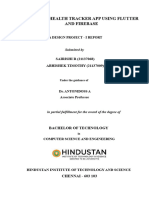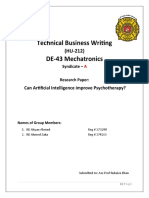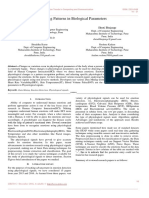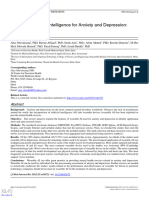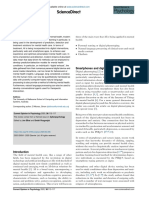0% found this document useful (0 votes)
26 views19 pagesPsyData Dynamic Final Report
The document reviews the role of wearable technology in monitoring mental health, highlighting its potential for real-time assessment of conditions like anxiety and depression through physiological data. It identifies significant research gaps, including issues of data integration, real-world validation, and ethical concerns, while proposing future directions for improving the effectiveness and adoption of these technologies. The paper also outlines challenges related to machine learning models and emphasizes the need for standardized datasets and longitudinal studies to enhance reliability and clinical applicability.
Uploaded by
20ST0528 KCopyright
© © All Rights Reserved
We take content rights seriously. If you suspect this is your content, claim it here.
Available Formats
Download as DOCX, PDF, TXT or read online on Scribd
0% found this document useful (0 votes)
26 views19 pagesPsyData Dynamic Final Report
The document reviews the role of wearable technology in monitoring mental health, highlighting its potential for real-time assessment of conditions like anxiety and depression through physiological data. It identifies significant research gaps, including issues of data integration, real-world validation, and ethical concerns, while proposing future directions for improving the effectiveness and adoption of these technologies. The paper also outlines challenges related to machine learning models and emphasizes the need for standardized datasets and longitudinal studies to enhance reliability and clinical applicability.
Uploaded by
20ST0528 KCopyright
© © All Rights Reserved
We take content rights seriously. If you suspect this is your content, claim it here.
Available Formats
Download as DOCX, PDF, TXT or read online on Scribd
/ 19




